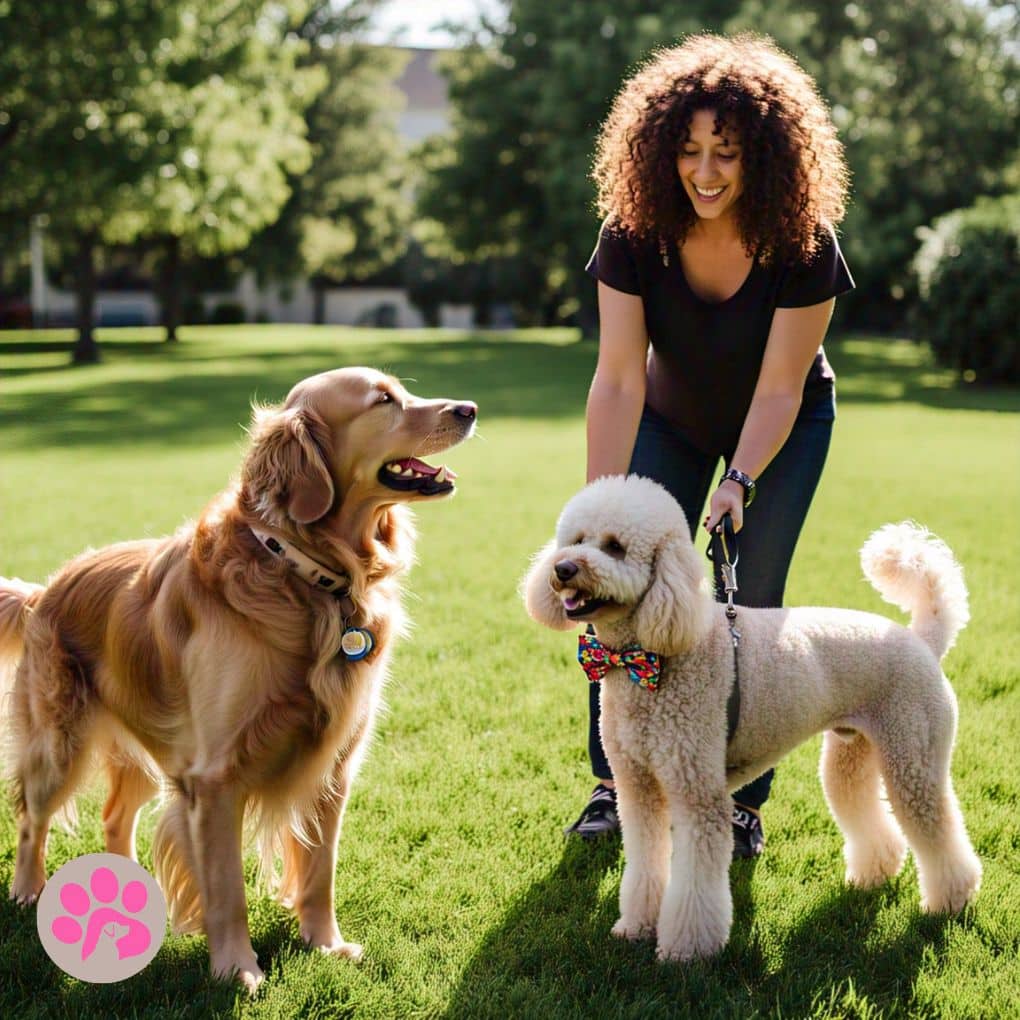When two dogs meet for the first time, it can be scary, especially if one is barking a lot. Dogs bark to talk to each other, but making too much noise when meeting for the first time can be a sign of fear, excitement, or even violence. It is important to figure out why the dog is acting up and use techniques to calm it down so that the meeting goes well and the dogs get along well.
When two dogs that have never met before meet, they usually check each other out by barking. That being said, if the barking gets louder or doesn’t stop, it could make things worse and cause people to fight. This shouldn’t happen, so dog owners should get both dogs ready for the meeting and make sure they are in a safe, peaceful place.
It’s important to plan ahead for how to handle the behavior of two pets that have never met or a playdate for dogs that have never met. Pick the right place, change their attention, and give them a treat for good behavior. These tips will help them calm down and make the first meeting more peaceful. It’s possible to get two dogs to meet in a way that is fun and calm for both of them.
Before the Encounter
Let’s say you’re about to introduce two dogs to each other. Suddenly, your house sounds like the set of a reality show. Will it be love at first sniff or a barking frenzy? To avoid trouble, it’s important to be ready. Pick a neutral area for their first meeting, somewhere that neither dog feels the need to protect as “their turf.” It doesn’t have to be a park or a quiet street; your backyard will do. Make sure that both dogs are on leashes, but don’t make them too tight. This will give you control without making the dogs jumpy. Also, don’t forget to bring some tasty treats with you. Think of them as rewards for being good. That would be like bringing snacks to a first date. A little something tasty makes everyone happy.
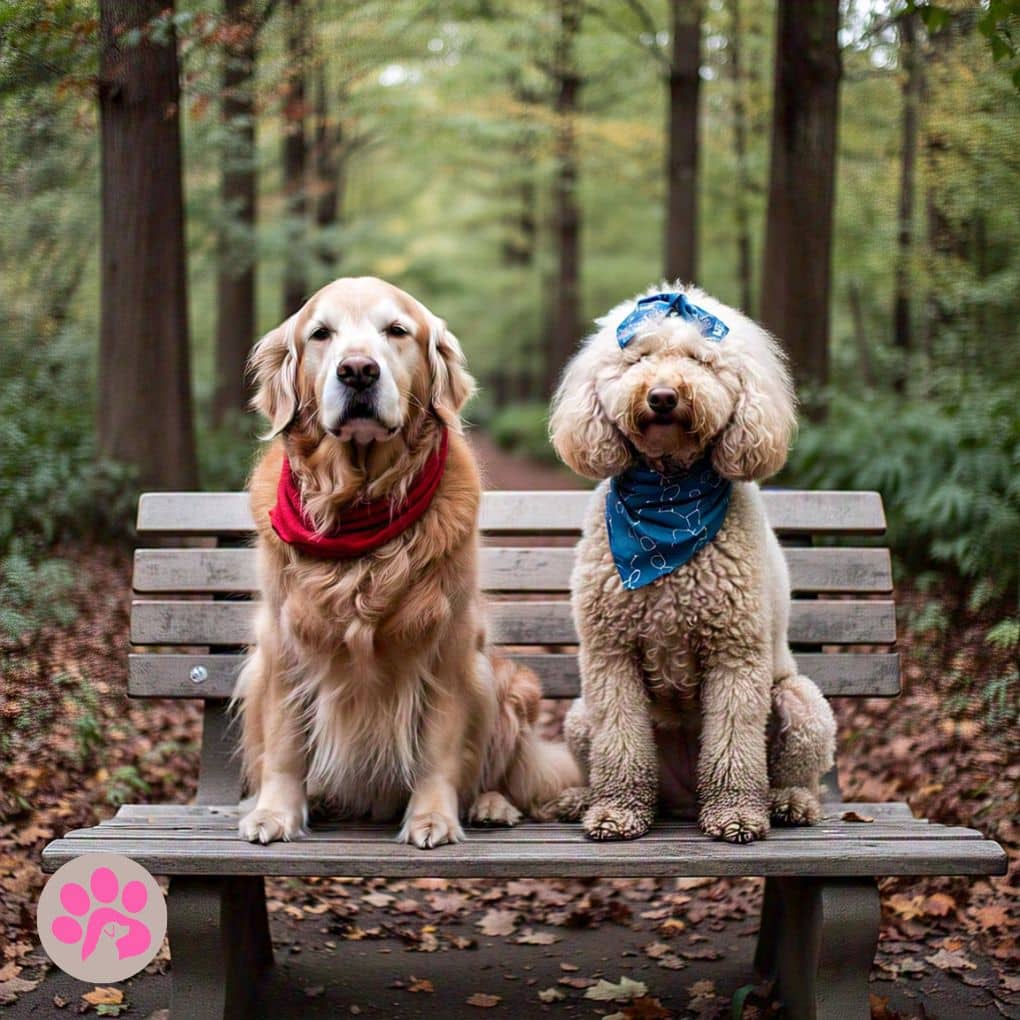
Let’s talk about energy before you leave. It’s best to let both dogs run around before the big meeting so they are both calm. A quick round of zoomies in the garden, a game of fetch, or a fast walk can help calm them down. Just make sure they’re not totally passed out; think sleepy, not sleepy. Also, check your own mood for a moment. Dogs are very good at reading how people feel, so if you’re stressed, they’ll know before you can say “calm down.” Take a deep breath, put the leash on, and you’re ready to go!
Choose a Neutral Space:
The place where you meet two dogs for the first time is more important than you might think. A more peaceful meeting can happen if you choose a neutral area that neither dog feels like it owns. Imagine having a party with two famous people. If you didn’t want trouble, you wouldn’t hold it in one of their houses. A park, a quiet road for walking, or even an open parking lot are all good neutral spots. These places make the dog feel like “this is not my home,” which can make it act aggressively and bark for no reason. Also, a new place is like a cold drink for dogs. They’ll have more things to see and smell, which will make meeting new people and dogs less stressful.
Stay away from places like dog parks that have a lot of people or things to look at. Their first meeting can be more nervous if there is too much noise or chaos. Check out the area ahead of time if you can to make sure it’s mostly quiet and doesn’t have any other dogs around. The goal is to make a space where they can focus on each other without worrying about being too close or too far away. You’re already halfway to a good welcome once you’ve picked your neutral ground.
Ensure Both Dogs Are Tired
If you want to calm down both dogs before they meet, nothing works better than letting them run around and get tired. Before you start, take each dog for a walk or do their favorite form of exercise. The goal is to get rid of that extra energy. This can be done by chasing a ball, going for a run in the garden, or playing a quick game of tug-of-war. This workout before a meeting lowers the chance of getting too excited, which can sometimes come across as hostile. It’s like letting your dogs “zoomies” before the big event.
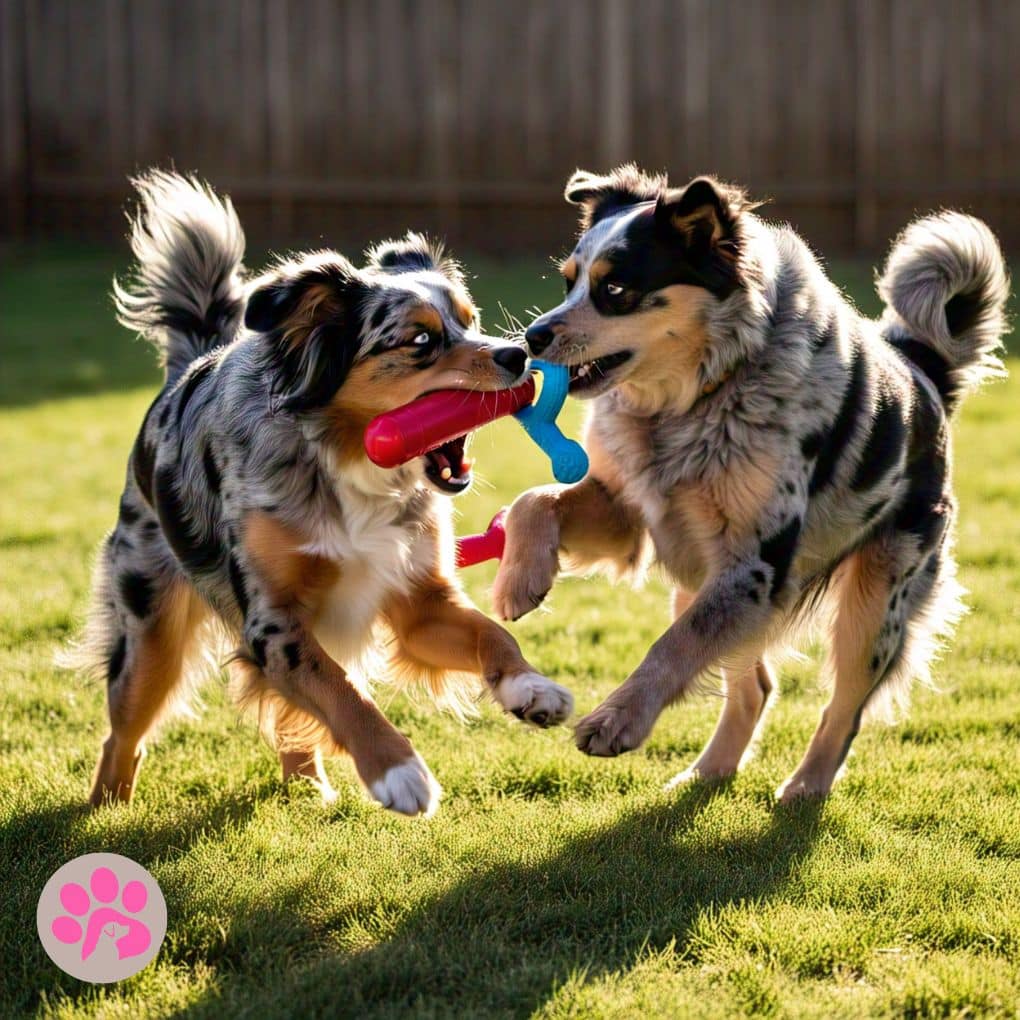
Watch how much energy they have; you want them to be just barely tired, not fully worn out. If your dog is too tired, it might act angry or irritable, which is not the mood you want to create. After they work out, give them some time to cool down and relax. They won’t be barking like crazy when they get to the meeting because they’ll be calm and ready to sniff. Along those lines, dogs are less likely to yell after a walk.
Use Leashes:
Leashes are great for getting two dogs to know each other. They keep you in charge while giving the dogs enough room to move around and play. The trick is to keep the leash free. Dogs may feel tense when their leash is too tight, which can make them feel limited and protective. You’d feel the same way if someone on your first date kept staring at you. A loose leash, on the other hand, shows that you are calm and sure of yourself, which makes the dogs more likely to look at each other with interest instead of fear.
At first, stand far enough away so that both dogs can get a feel for each other before moving in closer. Watch what they do with their bodies. Waggish tails, calm poses, and light sniffing are all good signs. If one of the dogs starts to bark or act upset, step back and give them a moment to calm down. Leads are there to keep dogs safe, but they don’t have to ruin the mood. Keep things casual, and the dogs will do what you say.
During the Encounter
Allow the dogs to slowly approach each other at their own pace. Do not force them to engage. Keep your shoulders back and your arms at your sides. Your energy sets the tone for the meeting. Do not get in the way of their standard dog handshake, which is a good sniff of each other’s behinds. We might find it strange, but dogs love it because it breaks the ice. You’re on the right track if they seem calm and interested.
Watch out for signs of stress, such as tense body language, growling, or raised hackles. If things look like they’re getting worse, carefully get their attention back by moving them apart or giving them a treat. Praise and celebrate good behavior, like touching gently or wagging its tail calmly. It makes good vibes stronger. When getting to know each other, it can be easier to trust each other if you keep your first meeting short.
Maintain Calm Energy:
Because dogs are emotional sponges, they soak up whatever vibe you’re giving off. It’s important to stay cool, calm, and confident. Do not yell or pull on the leash when things get loud. Instead, take deep breaths and move slowly and deliberately. Remember that your dogs look to you for direction. If you act like everything is fine, they will believe you. You can think of yourself as the anchor in the situation. The more calm you are, the less likely it is that they will get angry or worried.
Allow Distance:
Do not rush to close the space between the two dogs when you first start to play with them. Start far enough away that they can see and smell each other without feeling squished or pushed. This space gives them a chance to get used to the new person without making them feel defensive or protective. As both dogs show signs of calm (wagging tails, sniffing the air, or even ignoring each other), you can slowly close the gap between them, but always at their own pace, not yours.
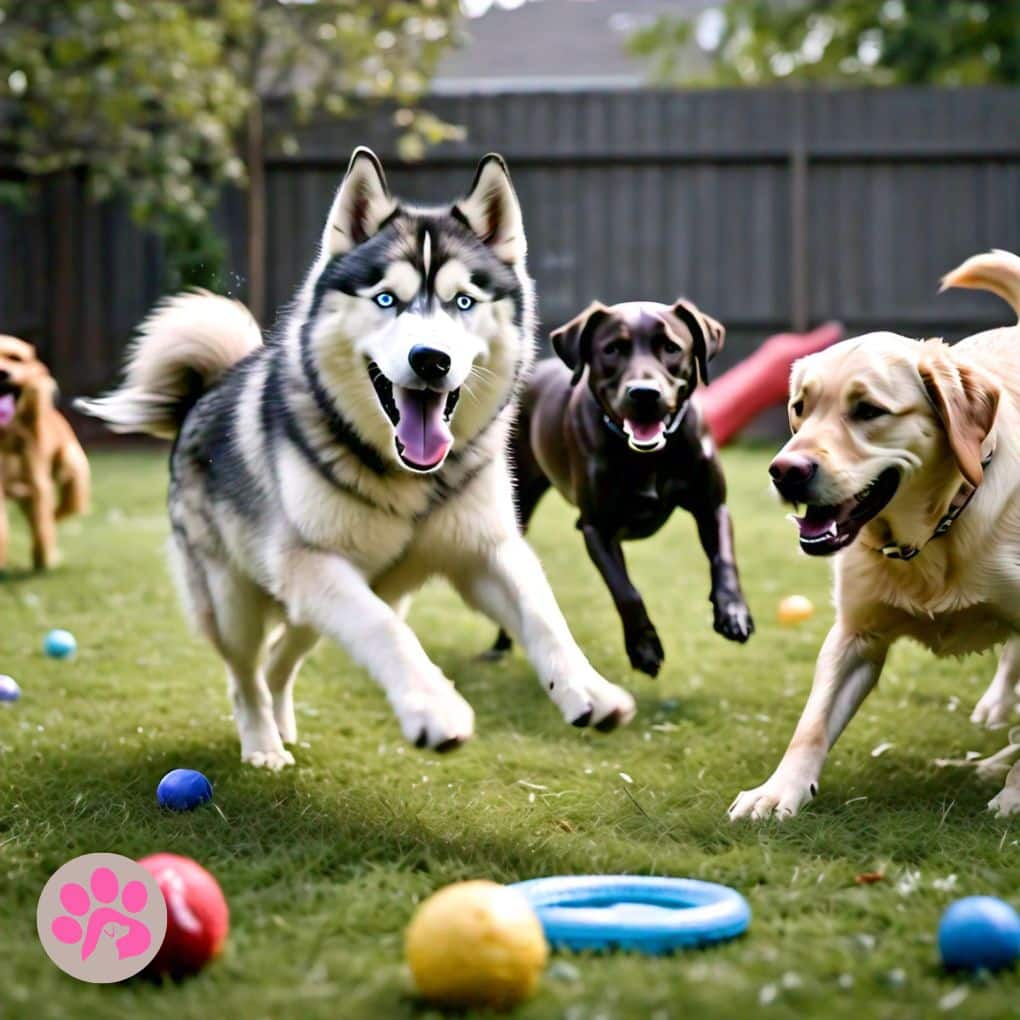
Focus Their Attention:
If they start to bark or get tense, quickly and quietly turn their attention to something good. Being told to “sit” or “watch me” is a simple way to get their attention off of the other dog. The dog will no longer bark as much this way, and you’ll be seen as a fun and calm boss. Taking their attention away not only makes things better right now, but it also helps them get along better with the other dog.
Reward Good Behavior:
Give your dogs lots of praise when they are calm, quiet, or active in a nice way. Give them their favorite treats, a positive “good job,” or even a quick belly rub to help them remember that being calm is what you want. Because dogs learn quickly when they get treats and attention, they enjoy even the smallest wins. When you praise them, it boosts their confidence and makes their relationship with you stronger, which makes future exchanges even easier.
If Barking Escalates
Introducing two dogs for the first time can feel tricky, but it can be a smooth and positive experience with the right steps. Start in a neutral spot to avoid territorial behavior and make sure both dogs are well-exercised to burn off extra energy. Let them approach each other at their own pace, keeping them on loose leashes for control. Stay calm and confident, as your energy sets the tone. Begin at a distance and gradually close the gap as they relax. If barking or stress arises, redirect their focus with treats, toys, or commands. Reward calm behavior with treats and praise to reinforce the positive experience. With patience and care, the two dogs can build a great bond.
Create a Visual Barrier:
When dogs start barking more, it’s usually because they are too excited and need a break. To stop them from seeing each other for a short time, put up a bush, a car, or even your body between them. This takes away the instant source of stress, letting them calm down without feeling like they need to react again. It’s like pausing the conversation. Once they’re calm, you can slowly bring them back together from a farther distance, making sure they’re ready.
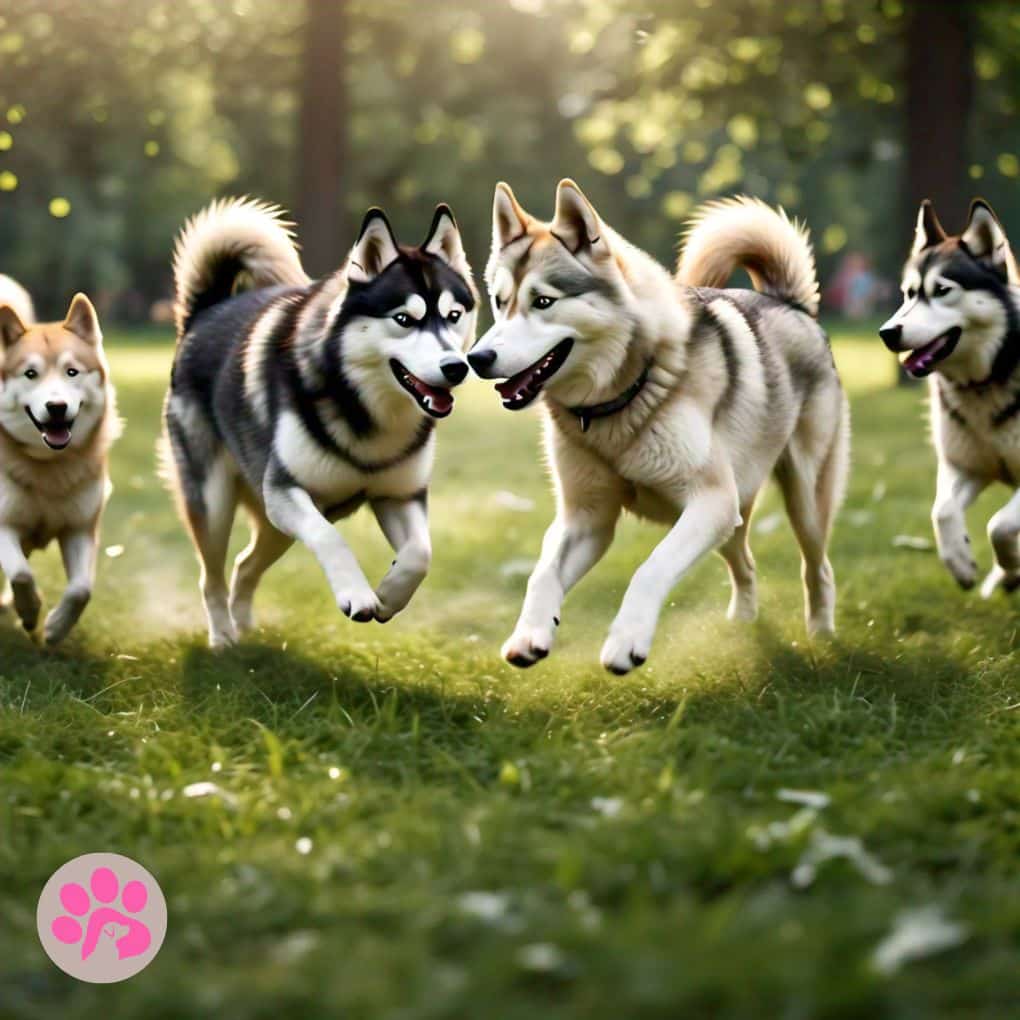
Give Breaks Out:
If the barking doesn’t stop no matter what you do, it’s time for a short time-out. Take the dogs apart slowly and let them cool off on their own. They can reset their feelings and stop the situation from getting worse by taking a short break. Also, take some time to relax. Your energy will be very important when you try again. Once both dogs seem calmer, you can reintroduce them, but this time keep the meeting short and upbeat.
Post-Encounter Tips
Repeat and Gradually Build Positive Associations:
Two dogs need time and stability to form a strong bond. The first meeting is just the start. Set up regular, short meetings in neutral areas to help them get used to each other. Keep these meetings cheerful and low-key. Reward calm and friendly behavior with treats and praise. As they get used to spending more time together, you can make the time they spend together longer and even do things together, like going for walks or playing. It’s like making friends: slowly but surely wins the game!
Consult a Professional:
If the dog keeps barking or showing signs of violence, don’t be afraid to call a professional. A dog teacher or behaviorist can look at the problem and give you specific ways to solve it. A trained eye can sometimes pick up on small changes or triggers that are easy to miss. Getting professional help not only keeps both dogs safe and happy, but it also gives you the confidence to handle future situations well. No doubt, each dog should have the best possible chance to meet a new friend.
